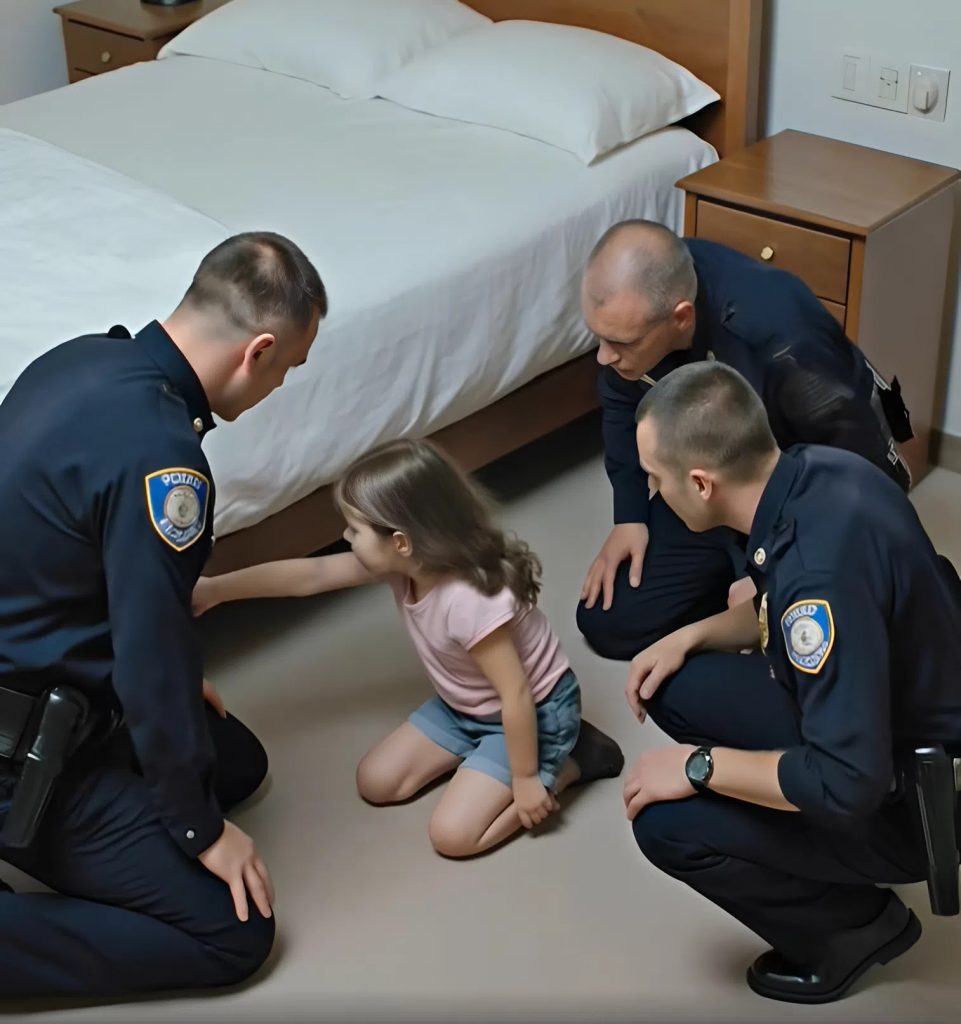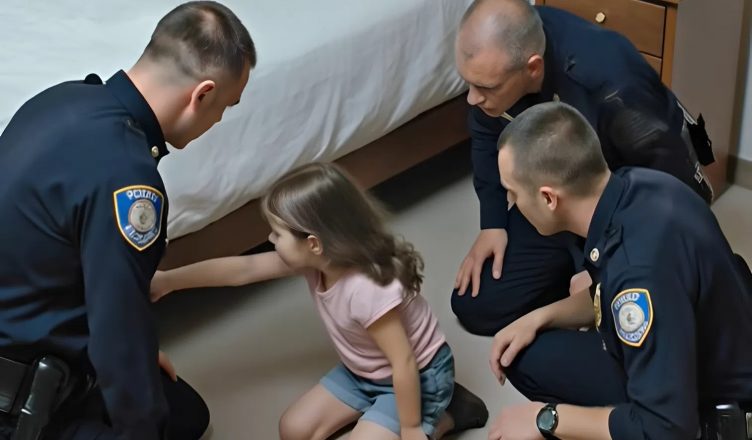It happened in a quiet residential neighborhood, the kind where evenings are filled with nothing but the rustle of leaves and the occasional footsteps of late-night strollers. No one imagined that behind one warmly lit window, a scene straight out of a psychological thriller was unfolding.
A police patrol was slowly making its way down the street. The shift had been uneventful: a few passersby, empty yards, a sleepy city. But within minutes, the silence would be shattered by a cry for help.
Suddenly, from the entrance of one building, a little girl — no older than five — ran out. She was barefoot, wearing bunny-print pajamas, her blond hair messy, and her eyes wide with terror. She bolted straight toward the patrol car, nearly stumbling as she ran.
— Help! — her voice trembled. — There’s a man… under my bed. He’s wearing a mask.
At first, Officers Kovalev and Melnikova thought it was just a child’s imagination. But the shaking in her voice and the frozen fear in her eyes made them pause. The girl explained quickly: she had woken up in the middle of the night and, in the dim light, saw someone crawling under her bed. His face was hidden by a black mask, his clothes all dark. He seemed to think she was asleep. She managed to slip out, hide in the closet, and then, spotting the patrol car outside, she ran for help.
The girl’s mother, who answered the door in a robe, seemed more embarrassed than alarmed.
— I’m sorry, she’s got quite the imagination, — the woman explained. — She’s been saying for weeks now that someone is standing in the corner of her room. I thought it was just a game she plays in her head.
The girl’s bedroom was neat and colorful, filled with stuffed animals. The officers checked every corner. Under the bed — nothing. No signs of anyone having been there. Kovalev was ready to crack a joke, but Melnikova frowned.
— You know, — she said quietly to her partner, — kids’ eyes don’t lie like that. Let’s check the building’s security footage.
Reluctantly, the mother agreed to let them look at the apartment intercom’s recording system. The footage rolled back slowly. Hours of nothing unusual… until the officers froze.

On the screen appeared a man dressed entirely in black, hood up, face completely hidden by a mask. He entered the building carrying something in his hand and climbed the stairs without hesitation. He had no keys — and he moved silently, deliberately. The hallway camera caught him approaching the girl’s apartment door. Then the image cut off — as if he had noticed the lens and stepped out of view.
Minutes later, another camera picked him up again. This time, he was leaving the apartment. But now, in his hand, he carried a small child’s backpack. His face remained covered.
The video ended.
In the apartment, panic erupted. The mother turned pale, trying to remember whether she had locked the door before going to the bathroom. There were no signs of forced entry — the door must have been left slightly ajar. Under the bed, where the girl swore she saw him, officers found a thin black cord and a small metal hook — possibly part of a bag or a tool.
— She saw everything, — Melnikova said quietly, looking at the girl. — And if it wasn’t for her courage, we might never have known.
The footage was sent to the station. The man’s identity is still unknown, but his behavior was deliberate. He seemed to be waiting for the right moment — for the adults to be distracted — and he chose the child’s room for a reason.
By the next morning, the story had spread through the entire neighborhood. Everyone was talking about the little girl who was the only one to notice the danger and brave enough to speak up.
And the officers keep repeating: sometimes a child’s words aren’t fantasy — they’re a warning that can save a life.
